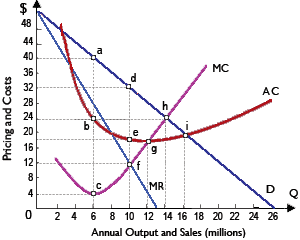St. Valentine’s Day software is currently going in version of 6.0. At this point on the demand curve where the price elasticity of demand is unitary, there the price would be approximately: (i) $20, resulting in roughly 16 million copies being sold. (ii) $27, resulting in approximately 13 million copies being sold. (iii) $32, resulting in roughly 10 million copies being sold. (iv) $40, resulting in about 6 million copies being sold. (v) $47, resulting in about 2million copies being sold.

Can anybody suggest me the proper explanation for given problem regarding Economics generally?